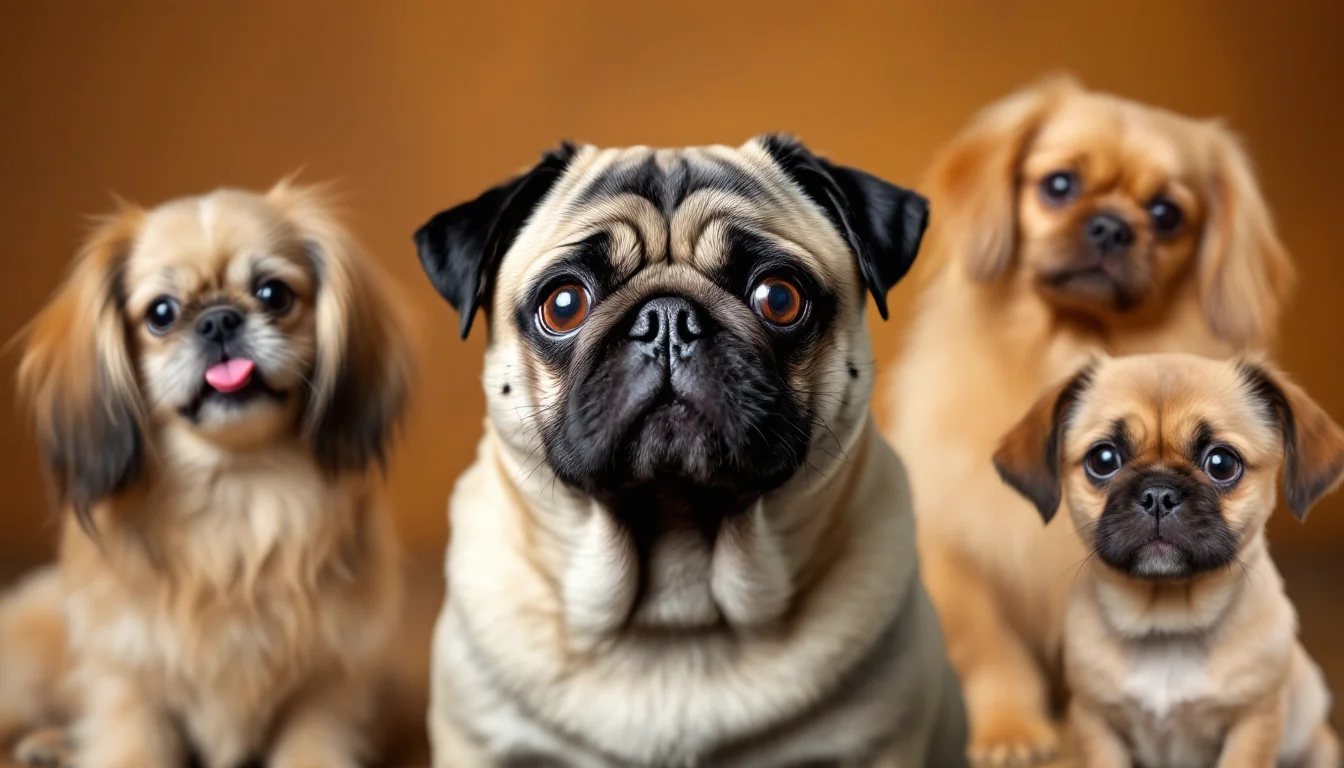Some dog breeds have particularly sensitive eyes and require extra attention in their daily care routine. If you share your life with a pup prone to eye issues, understanding how to properly care for their vision can prevent discomfort, infections, and long-term damage.
In this article, we’ll explore why some dogs are more vulnerable to eye problems, how to care for their eyes at home, and when it’s time to visit the vet. Your dog’s eyes are windows to their well-being—and keeping them healthy ensures a better quality of life.
Why Are Some Dog Breeds More Prone to Eye Problems?
Certain breeds are genetically predisposed to eye conditions due to the shape of their skull, facial structure, or hereditary traits. Here are a few reasons some dogs need extra eye care:
- Prominent Eyes: Breeds like Pugs, Shih Tzus, and Boston Terriers have bulging eyes that are more exposed to dust, trauma, and dryness.
- Facial Folds: Dogs with wrinkles around their eyes, like Bulldogs and Shar-Peis, may trap moisture and debris, increasing the risk of infection.
- Hair Around the Eyes: Long-haired breeds such as Maltese or Pekingese may suffer from irritation if the fur isn’t kept trimmed.
- Tear Duct Issues: Breeds like Cocker Spaniels and Poodles can have blocked tear ducts, leading to excessive tearing or staining.
Understanding your dog’s breed characteristics helps you prevent common issues before they start.
Common Eye Problems in Sensitive Breeds
Here are some of the most frequent eye concerns seen in sensitive breeds:
1. Dry Eye (Keratoconjunctivitis Sicca)
This occurs when the eyes don’t produce enough tears, causing dryness, irritation, and redness.
Symptoms:
- Red or inflamed eyes
- Excessive blinking or squinting
- Mucus discharge
Care tip: Use vet-approved eye drops or lubricants as needed.
2. Cherry Eye
A condition where the third eyelid gland prolapses, appearing as a red bump in the corner of the eye.
Care tip: Often requires veterinary attention or surgery.
3. Corneal Ulcers
Scratches or injuries to the eye surface, common in dogs with exposed eyes.
Symptoms:
- Cloudiness
- Sensitivity to light
- Pawing at the eye
Care tip: Seek immediate veterinary help—ulcers can worsen quickly.
4. Tear Staining
Brown or reddish discoloration under the eyes due to excessive tearing. More common in breeds with light fur and shallow tear ducts.
Care tip: Clean the area regularly and keep fur trimmed.
5. Entropion or Ectropion
These are eyelid disorders where the lids roll inward (entropion) or outward (ectropion), leading to irritation or exposure.
Care tip: These may require surgical correction depending on severity.
How to Maintain Your Dog’s Eye Health
Daily care and regular checks can go a long way in preventing issues. Here’s how to protect your dog’s sensitive eyes:
1. Gently Clean the Eyes Daily
Use a soft, damp cloth or a vet-recommended eye wipe to clean around the eyes. This prevents buildup of dirt, mucus, or tear stains.
Pro tip: Always wipe outward, away from the eye, to avoid pushing debris into it.
2. Trim Hair Around the Eyes
Keep the fur around your dog’s eyes trimmed to avoid irritation and help prevent hair from entering the eye.
Caution: If you’re unsure how to trim safely, have a groomer or vet do it.
3. Monitor for Changes
Check your dog’s eyes daily for:
- Redness
- Cloudiness
- Excessive tearing
- Squinting
- Discharge
Any change should be addressed quickly with your vet.
4. Avoid Irritants
Keep your dog away from strong winds, cigarette smoke, or dusty areas. These can dry out or irritate sensitive eyes.
During walks: Consider using protective goggles for breeds with very prominent eyes.
5. Feed a Nutrient-Rich Diet
Certain nutrients—like Vitamin A, lutein, and omega-3 fatty acids—can support eye health. High-quality dog food usually provides these, or you can ask your vet about supplements.
When to See a Veterinarian
If you notice any of the following symptoms, it’s time to get professional help:
- Persistent redness or swelling
- Change in eye color or size
- Cloudy appearance
- Visible discomfort (rubbing eyes, avoiding light)
- Sudden vision loss or bumping into objects
The eyes are sensitive organs, and delaying treatment can lead to long-term consequences. Prompt veterinary care is always the best course of action.
Tips for Specific Breeds
Here are a few breed-specific suggestions for dogs commonly affected by eye conditions:
- Pugs & Shih Tzus: Regular vet checkups are vital—these breeds are prone to corneal ulcers and dry eye.
- Maltese & Poodles: Prevent tear staining with daily wiping and appropriate grooming.
- Bulldogs & Shar-Peis: Watch for infections hidden in skin folds and clean the area gently every day.
- Cocker Spaniels: Keep an eye on discharge and schedule routine vet exams to check for glaucoma and cataracts.
Final Thoughts: Protecting Their Window to the World
Your dog experiences the world through their senses—and vision plays a huge part. For breeds with sensitive eyes, prevention, observation, and regular cleaning can make all the difference in their comfort and long-term health.
Staying consistent with eye care routines will not only prevent infections and irritations but also help your furry friend feel their best every single day.

Dedicated to sharing practical tips and accessible guidance on dog care, nutrition, safety, and daily routines for owners of different breeds. With a focus on promoting a safe, healthy, and happy environment for pets, the blog’s content covers breed-specific needs, home adjustments, energy levels, and wellness strategies for all kinds of dogs.
